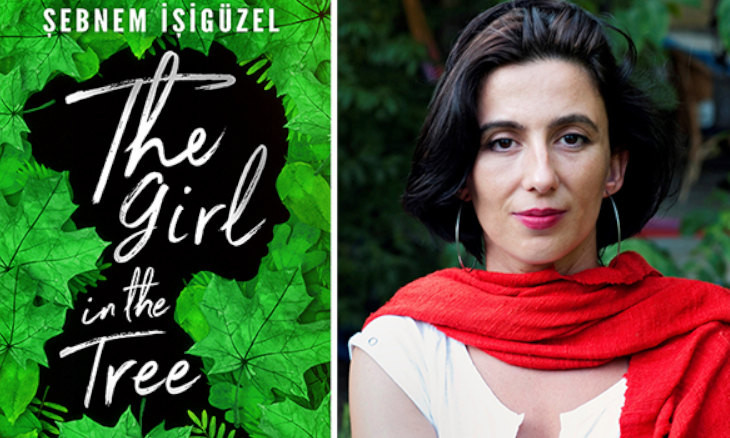The first Turkish novel nominated for an Eisner Award
Luke Frostick writes: Edanur Kuntman’s Tales from Behind the Window has been nominated for an Eisner Award. If she wins, she will be the first Turk to win an Eisner. The story is a piece of creative-nonfiction and its main narrative is drawn from the memories of Kuntman’s grandmother growing up in the Çarşamba district of Samsun.
Luke Frostick
It is very exciting to see Turkish comics getting some international recognition. Writer and artist Edanur Kuntman’s Tales from Behind the Window has been nominated for an Eisner Award, one of the highest accolades in the comics and graphic novels world. If she wins, she will be the first Turk to win an Eisner. Thus, I felt it was important to write a few words about Tales from Behind the Window and express my hope that more Turkish graphic novels are made available in English.
The story is a piece of creative-nonfiction and its main narrative is drawn from the memories of Kuntman’s grandmother growing up in the Çarşamba district of Samsun. Yet according to the author, the book takes small liberties with the plot and tells us the true story of how a woman is sold into marriage by her domineering brother and is trapped into a life that she wouldn’t have chosen for herself. Edanur Kuntman told me that her intention in writing and drawing Tales from Behind the Window was to express the feelings that her grandmother wasn't able to. In this regard, the book is a success.
 "The Girl in the Tree": İşigüzel's account of millennial Turkey
"The Girl in the Tree": İşigüzel's account of millennial TurkeyIt is a tale about anger. Süreyya rages against the system that she lives in, but ultimately she is not in a position of power to change anything. This aspect of the story is drawn directly from the author’s grandmother’s experience. Kuntman recalls that her grandmother would still get angry about how her brother had sold her into marriage even years after the event had happened.
While the point of view character is Süreyya, the book also details the lives of women around her. They are also trapped in similar predicaments as the main character. This opens up another interesting area of discussion as the comic tackles the way that even well meaning women can end up being complicit in the patriarchal oppression due to tradition. A story that deals with these topics is inevitably political, but it does not preach or moralize about women’s roles in society, leaving the reader to draw what lessons they want from the story by themselves. The narrative is tight and simple, allowing the writer to laser-focus on her theme.
This theme of the comic is reinforced by a running motif of her scarf as a symbol of her freedom and oppression. It is perhaps not the subtlest of imagery, but it does create some compelling visuals of cold Back Sea fields, her scarf blowing in the wind. Some of the best in the book perhaps. It is particularly powerful as the story reaches its mournful ending.
The artistic style is based on manga the characters having large eyes and thin features which is a style distinctive of other web comics, but Kuntman has her own unique twists as well. Though it lacks the detail and polish of a veteran mangaka like Inio Asano or even Kyoko Okazaki, for the most part the art does the job. It uses large blocks of negative space and bold changes in color palette to add power to important emotional scenes in really effective ways. I particularly loved one of the early sequences where the men of Çarşamba are shown for the first time and Süreyya’s brother is wordlessly introduced as a menacing presence that hangs over the story. Moreover, later when she learns the circumstances surrounding her betrothal, changes of color, repeating images and negative space is used to highlight the emotional anguish in the scenes.
 A tough female journo's account of the struggle for modern Turkey
A tough female journo's account of the struggle for modern TurkeyThis particular style of art is not going to be to everybody’s taste and those more used to the detailed panels of American comics or manga are going to find the stripped-down art off-putting. However, there are some really evocative pages and panels in the book. The art’s quality could do with being a bit more consistent. Though the art does have its high points, it also has some lows where characters’ depiction stops being simplified and instead comes across as crude. That being said, given that this is a solo project without the editorial resources and budget of publishers like Image or VIZ, some fluctuations in quality are excusable and do not detract from the story which is the artist’s main focus.
To bring this to a conclusion, the story is well executed and really gives a feeling of the anger that Kuntman's grandmother felt and the claustrophobia of being trapped by society. The art style could have been richer in places, but the story and the themes that it is engaging with are well executed enough that it doesn’t matter. I feel comfortable recommending it to fans of comics and people who normally avoid the genre. These days, Edanur Kuntman is focussing on game design rather than graphic novels, but if another one of her books comes out, I will happily read it.
